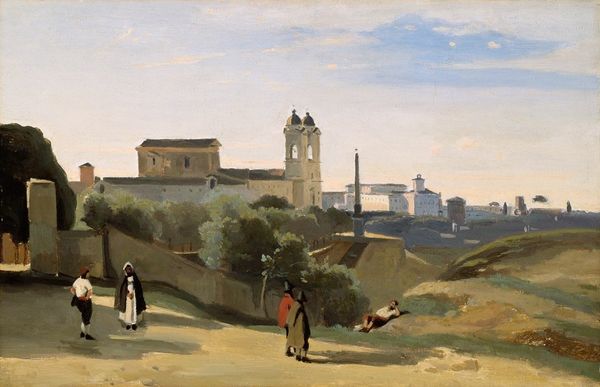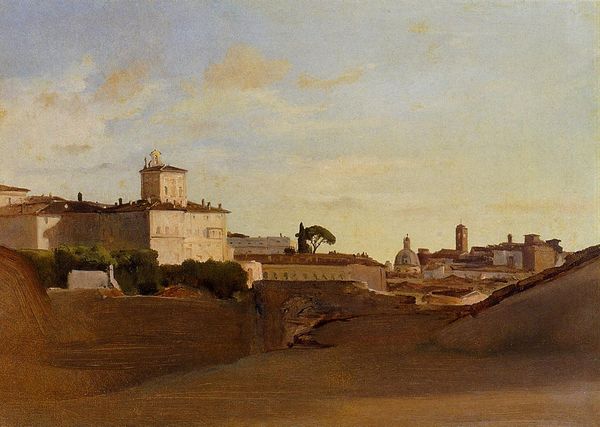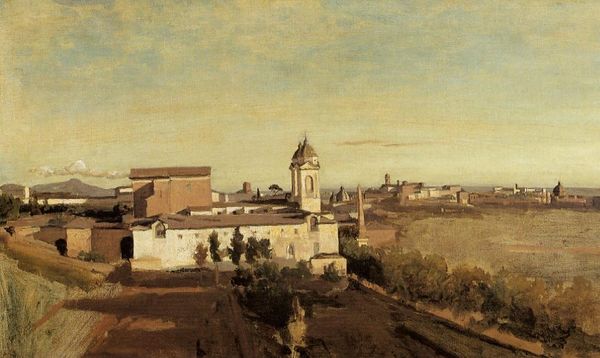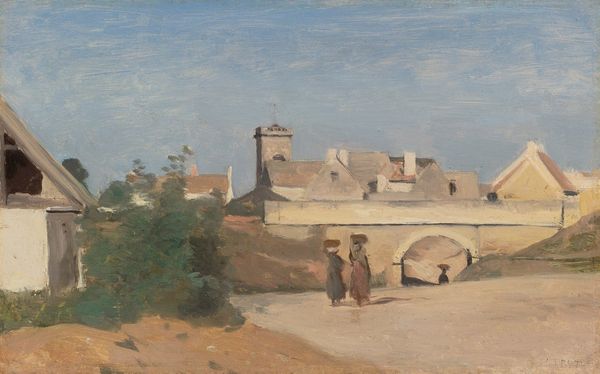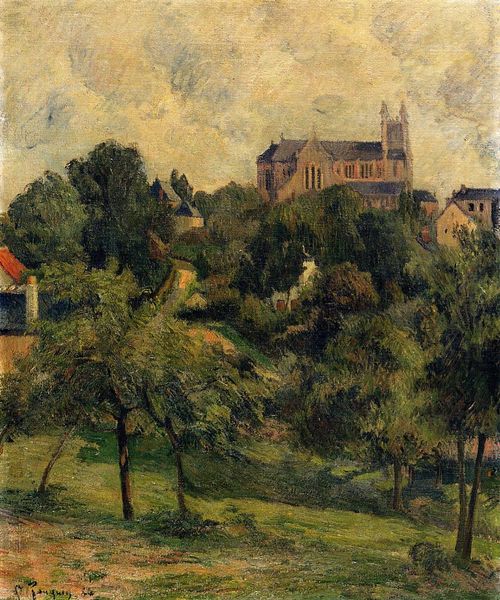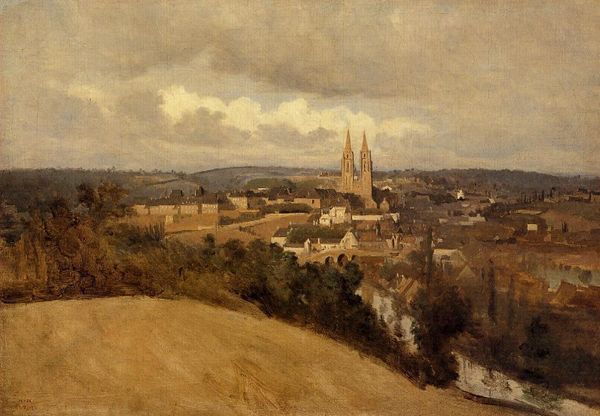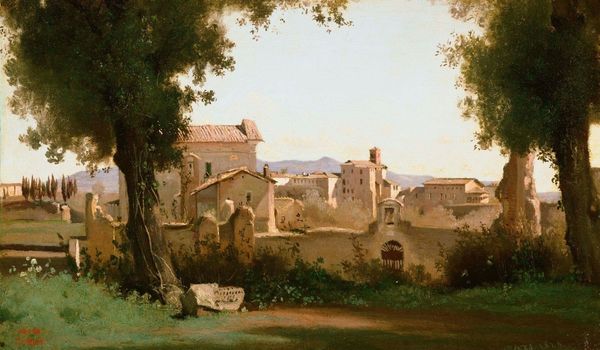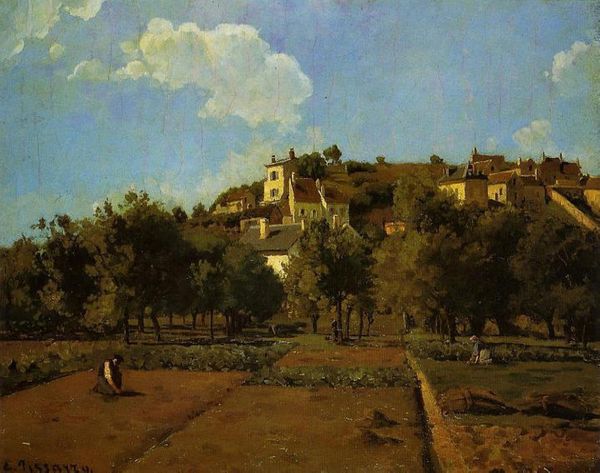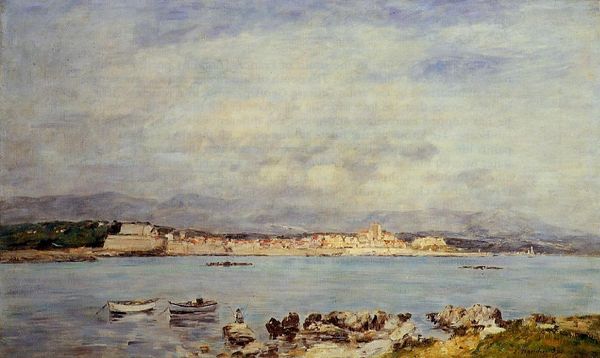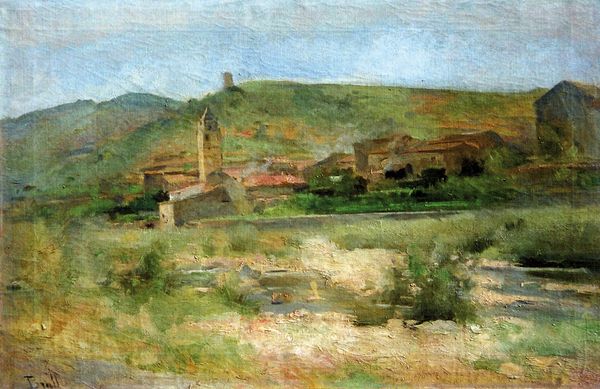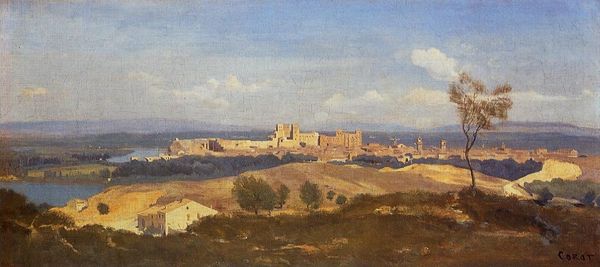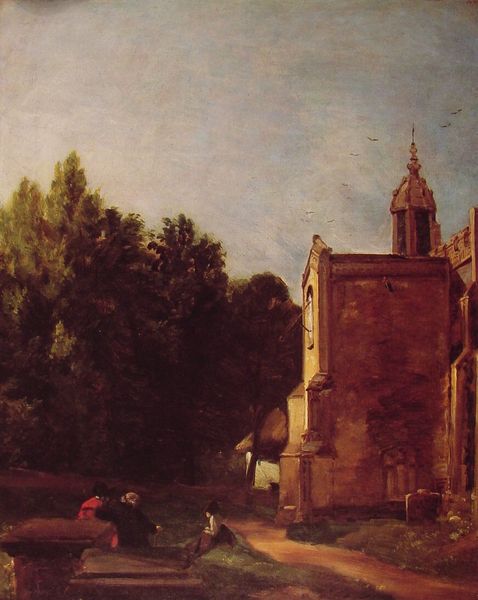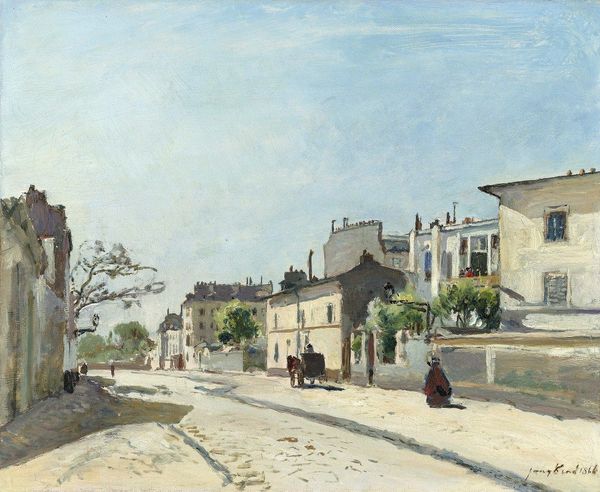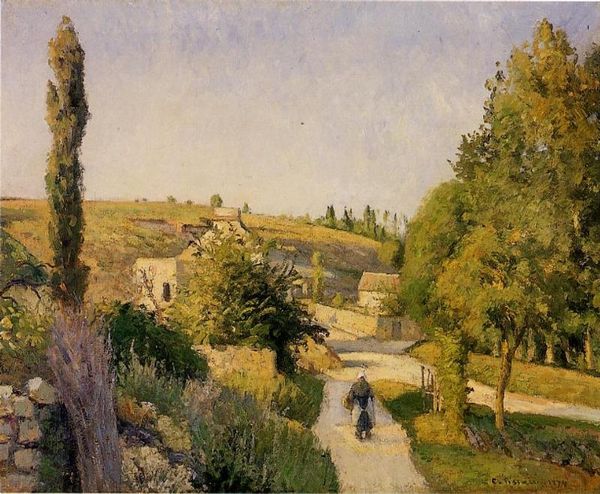
Rome, the Trinita dei Monti View from the Gardens of the Academie de France 1827
0:00
0:00
jeanbaptistecamillecorot
Musée d'Art et d'Histoire, Geneva, Switzerland
painting, plein-air, oil-paint
#
painting
#
plein-air
#
oil-paint
#
landscape
#
perspective
#
impressionist landscape
#
figuration
#
oil painting
#
romanticism
#
cityscape
Copyright: Public domain
Curator: This is Jean-Baptiste-Camille Corot’s "Rome, the Trinita dei Monti View from the Gardens of the Academie de France," painted in 1827. It's an oil-on-canvas work and a stunning example of plein-air painting. Editor: My first impression is one of faded grandeur, there is something really poetic here. The muted palette almost feels like a memory. Curator: It certainly captures a moment, doesn't it? Corot painted this while he was a young artist in Rome, absorbing the artistic atmosphere. The French Academy had a profound impact, emphasizing classical ideals and historical subjects. It reflects a specific aspiration to revive and connect with classical values. Editor: The obelisk is a powerful, obvious symbol. A link to ancient Egypt appropriated by the Romans. Even now it radiates Imperial power. Curator: Precisely. Its presence speaks volumes about Rome's layers of history, its absorption of diverse cultures, and its continued symbolic significance throughout the centuries. Editor: And the figures down below, those two in the foreground... they almost feel like actors on a stage, adding a sense of timelessness and continuity. I get the sense of how powerful and enduring institutions shape perception across time and place. Curator: Interesting observation! Corot positioned those figures deliberately, but it subtly points to a certain tension within the art world at the time. A gradual shift in art education from academic teachings to art based on observation and feelings. Editor: True. The Academy would encourage a grand vision of History with a capital 'H'. Whereas here we see a very humane interaction unfolding with time and cultural memory. I find that tension really interesting. It encapsulates art's purpose really well. Curator: Absolutely. It’s a conversation between past grandeur and an intimate present. Editor: Yes, art continues to serve as an exploration and connection to power, culture, memory, and personal interaction. Thanks for your perspective. Curator: Thank you. It is these various perspectives that truly illuminate how artwork can resonate with many over time.
Comments
No comments
Be the first to comment and join the conversation on the ultimate creative platform.
